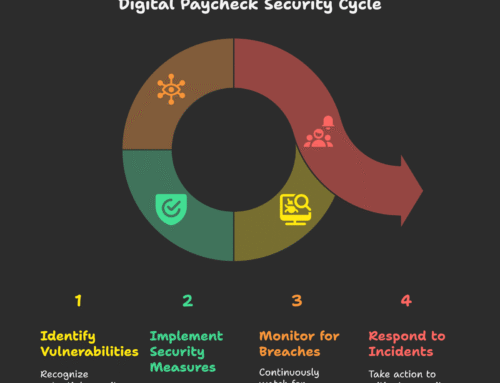Hiring new talent is a critical part of running a business. On average, it takes 36 days to fill a position and costs upwards of $4000. It’s safe to say that most organizations don’t have that kind of time or money to spend for every single employee they hire.
If you’re looking to improve your hiring methods but don’t know where to begin, this post is for you. We’ve come up with a guide to help streamline the process and make the most out of it without spending too much.
Top 6 useful Methods to improve your online hiring process for your business
The first step in hiring smart is understanding your organisational needs. More importantly, you need to understand that you will have to group similar aspects that are present in hiring for any position while leaving room for flexibility and personalization according to the job at hand.
If that sounds confusing, think of the process to hire an HR personnel and an Accountant. Both have a completely differential skillset, yet the hiring process is more or less the same — you post the job, review applications, have skill tests, and hold interviews.
To improve your online hiring process for any job, you need to focus on various aspects that play a pivotal role in helping you find the right candidate. Without further ado, let’s take a look at them:
1. Test the candidates
Making applicants take a skill test is the quickest and easiest way to filter out the ones that don’t fit the role you need them for. It may be an expense as you would have to pay the candidates for their work, but one that has multiple benefits.
For one, it lets the candidates know that you mean business with this hiring. Secondly, you get an idea of their skills in practice and beyond what they claim on their resume. It is also a great way to pick candidates that may lack somewhat in experience, but have the right skills for the job.
Say, you are hiring developers for your company. Ask the candidates to take standardized tests such as a c# coding test. It’s an entry-level algorithm test that examines their basic programming skills and can be performed in around 10 minutes.
Tests such as these are great for initial screening to identify the strongest candidates. Though you shouldn’t rely on just one test. Couple skill tests with other kinds of tests such as cognitive abilities and analytic skills. Other methods to gauge a candidate’s potential such as work samples and interviews are just as important.
2. Get to know them
Whether you put these questions in a questionnaire, a written test, or interviews, it’s up to you. You should pose questions to candidates that help you know them as people. That’s usually what interviews are for. They help the recruiter see the candidate as a person who could potentially be a part of their company in near future.
Ask your candidates fun questions that help you understand their mindset. Questions such as “what role do you enjoy the most?”, “what is your thought process in a project?”, and “how well do your teammates or coworkers work with you?”.
Avoid asking routine questions like “why do you want to work with us?” and trick questions like “what is your biggest weakness?” The candidate would most likely have a rehearsed response for it and that is exactly what you don’t want.
You can also conduct a background check for desirable candidates. Their social media and LinkedIn profiles are a great first-hand way to know about them with a cursory glance. However, you should keep in mind that people present themselves a certain way in both those places and thus, you should not take everything you see there at face value.
3. Optimize the job description
Creating job descriptions is a fine line to walk. You want to attract as many potential candidates as you can but you also want to filter out the unsuitable ones. That is admittedly hard to get right in a job description, and what do you know, inadequate job postings happen to be the number one reason for companies receiving a low number of applications.
How do you create the perfect job posting? For starters, keep it short and simple. Don’t make it a list of responsibilities you want a candidate to take. Instead, focus on highlighting these three aspects:
a) Who you want
Be clear and concise in listing out who you are looking for. Mention the skills needed, preferred, and the duties they will perform. Remember to not make it a long list — no more than five to seven bullet points. Write a summary of the role or what a typical day would be like. It helps candidates visualize the job better.
b) Who you are
Tell the candidates about yourself in brief. Many job postings that do include this section often get it wrong by adding a wall of text that applications will likely skip past. Tell them about yourself in brief i.e., what matters and what they need to know.
Describe yourself as you probably would in your social media bios — in a single line that encapsulates everything important. For example, if you are a company that makes health supplements, you can describe yourself as “we’re a group of fitness enthusiasts making products that help you stay fit”.
c) Why work for you
This is perhaps the most important bit that most recruiters forget. Treat your job posting as an ad about why you are the best company to work with rather than one asking for the best candidate. Tell them in clear words what they are to gain by working with you.
Elaborate on how you will help them boost their career, how the job will help them learn and train to get better. Mention your company culture. Keeping the language casual also helps in establishing an inviting tone.
4. Streamline the process
Neither you nor your potential employee wants to go through a lengthy recruitment process. You need to craft a hiring process that is short, simplified, and consists of only the important aspects.
Tests for entry-level jobs may consist of fewer steps than ones for a standard job. Move quickly in the process, especially if you have your eyes set on a specific candidate for a role.
Personalizing your interactions with potential candidates also helps move the process faster. Recruiters use LinkedIn and even social media to reach out to people they may see fit for a role, approaching them in a casual manner and receiving prompt replies.
5. Showcase your company culture
This harkens back to the earlier point about letting people know why you are the best company they should choose to advance their careers. Showcase your company culture on social media as well as your website and blogs.
Let people know your process to do certain things, such as ‘behind the scenes’ of organizing events, glimpses of office parties, and workers having a good time. It lets people see what they can be a part of and aspire for it.
6. Source candidates better
Don’t rely on only the popular sources to find employees. Widen your reach and use technology to your aid. Many people, for example, discreetly look for jobs while they are at their current jobs.
They may change their status at LinkedIn to the option of ‘looking for a job and hide it from my employer’. You can reach out to these passive candidates and start casual conversations to recruit them.
a) Pipeline (backup)
Create a pool of all the candidates that didn’t make the cut for any of the jobs you recruited for and revisit it first thing when you have to hire for a new role.
By engaging with them before a role opens up, you actually end up reducing the time you take to hire someone new. Categorize them based on skills, qualifications, roles they are fit for, and location to make it easy for you to search.
b) Sourcing tools
Invest in sourcing tools to find suitable candidates faster. These tools are software applications that search through profiles and resumes to find a match for the role you are looking to hire for. They also help in collecting information and contacting candidates faster.
c) Social media
Social media is not usually associated with hiring but companies are increasingly leveraging its wide reach in recent times. They often cross-post job openings on Twitter and Instagram.
Follow conversations and communities on social media to find new people. The Reddit community for ‘jobs’ is highly active and has over 600,000 users with focused discussions surrounding jobs. They can help you get proactive feedback from the employees’ point of view.
Conclusion
Hiring the right talent is not an easy task, but simplifying the process and emphasizing the right things can greatly aid you in finding the perfect candidate for a job.
As you work toward bettering your hiring process, don’t forget to keep an open mind toward the candidates. Prioritize work ethics and flexibility and always reach out to the candidates regardless of whether they get selected or not.
Let us know in the comments what your hiring process is and what you do to improve on it.








